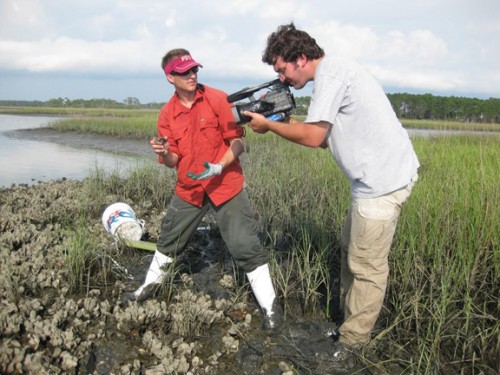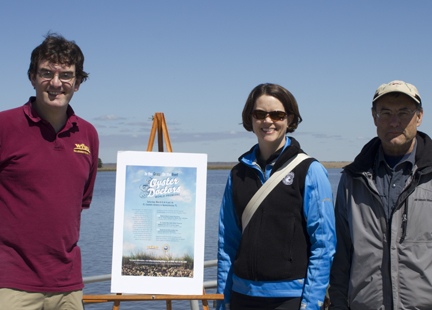
Interested in learning about the delicate ecosystems along the Forgotten Coast? Learn what researchers have discovered by tuning in to the documentary “In The Grass, On the Reef: Oyster Doctors,” as it premiers on WFSU television at 8 p.m. EST on March 19.
Four years of collaboration with marine researchers culminates in WFSU’s latest documentary, Oyster Doctors. Dr. Randall Hughes, Dr. David Kimbro and their crews have let WFSU cameras be there for the twists and turns, failures and successes, and ultimately the discovery that has taken their research in a fascinating new direction. While pursuing their research on animal behavior and its effects on intertidal ecosystems, they were also driven to research oyster reef failures in drought stricken areas.

On the one hand, they have pursued the idea that animal behavior, the menace of a predator, can influence the health of marshes, oyster reefs, and seagrass beds. On the other hand, does any of that matter if nature one day turns its back on these coastal habitats and cuts off the water? It’s a question we ask as we delve into this spectacular world.
The filming for this one-hour documentary started in 2010 and covers the ecosystems biodiversity along the coast and sheds light on oyster predators such as the oyster drill and crown conch.
Drs. Hughes and Kimbro received funding for their project from the National Science Foundation and funding for the documentary through The Connecting Researchers and Public Audiences (CRPA) grant, which brings science and the public together for a better understanding of the scientific world.
For more information, go to: http://wfsu.org/blog-coastal-health/
